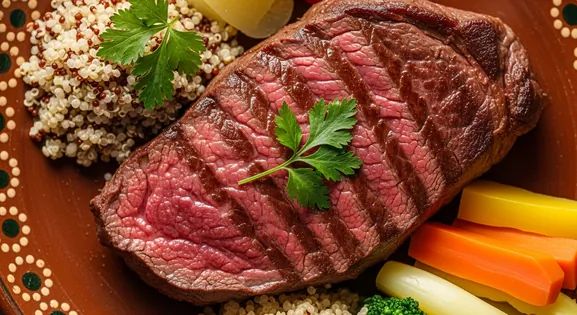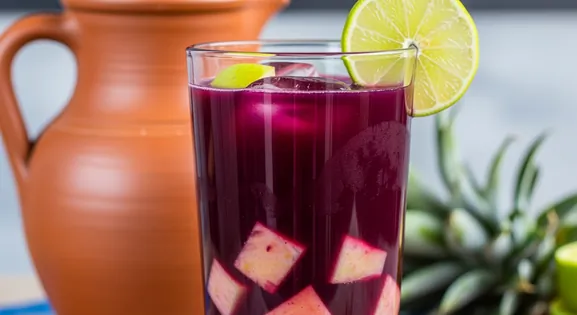
Alpaca Steak
Bistec de AlpacaLean meat from domesticated alpaca with mild flavor.
Cusco blends ancient Incan culinary traditions with Spanish colonial influences in its vibrant food scene. From traditional picanterías to bustling San Pedro Market, discover authentic Andean cuisine at the gateway to Machu Picchu.
Authentic local market with fresh produce, juice stalls and food counters away from tourist routes
Artisan district with authentic picanterías serving traditional Andean cuisine
Freshest ingredients and authentic local breakfast options
Many restaurants offer 'menu del día' (set lunch) with best value and freshest preparation
Tap water isn't safe for visitors; altitude intensifies dehydration effects
Ensure ice is made from purified water in restaurants and bars
Cusco's 11,152 ft (3,399 m) elevation can affect digestion; eat lightly for first 24-48 hours
Local remedy for altitude sickness available at most restaurants and cafés
Cusco's food culture reflects its Incan heritage and Spanish colonial history, creating a unique Andean cuisine centered around native ingredients like potatoes, corn, and quinoa. Local picanterías (family-run restaurants) preserve traditional cooking methods, while the historic center caters to international visitors with adaptations of regional classics. Markets like San Pedro offer insight into everyday Andean food traditions, where locals shop for fresh produce and enjoy affordable home-style meals.
Heavy rains can affect street food safety and outdoor dining
Rainy season brings excellent traditional hot dishes like chairo and caldo de gallina
Perfect weather for outdoor dining and street food exploration
Dry air at high altitude increases dehydration risk; drink more water than usual
Lean meat from domesticated alpaca with mild flavor.
Rich hen broth with noodles, potato, and meat.
Raw trout marinated in lime juice with garnishes.
Purple corn beverage simmered with fruits and spices.
Experience Brazil's diverse culinary landscape from vibrant street food markets to traditional churrascarias while navigating food safety in South America's largest gastronomic paradise.
Experience Mexico's legendary street food scene and rich culinary heritage while navigating food safety considerations in this vibrant Latin American gastronomic powerhouse.
Experience Peru's diverse culinary landscape from Andean traditions to coastal ceviche while navigating food safety considerations in this UNESCO World Heritage gastronomy destination.
Discover East Asia's diverse culinary landscape, from Japan's meticulous sushi to China's regional specialties. Learn essential food safety tips for navigating seasonal changes while experiencing authentic cooking techniques.
Explore Europe's diverse culinary landscape, from Italian trattorias to Spanish tapas bars and French bistros. Discover essential safety practices while navigating seasonal markets, street food festivals, and authentic regional specialties across this gastronomic paradise.
Discover Latin America and the Caribbean's vibrant culinary landscape, from Mexico's spicy street tacos to Brazil's churrasco and Caribbean seafood delicacies. Navigate distinctive regional preparation methods while ensuring safety across diverse climates and bustling mercados.
Discover Oceania's diverse culinary landscape, from Australia's modern fusion to traditional Polynesian earth ovens. Learn essential food safety tips for navigating tropical conditions while experiencing authentic Pacific Island cooking techniques and fresh seafood.
Navigate Southeast Asia's vibrant street food scene, from Thailand's aromatic curries to Vietnam's fresh herbs and Malaysia's spice blends. Discover essential safety practices for enjoying authentic flavors while managing tropical climate challenges.
Discover South Asia's vibrant culinary landscape, from India's aromatic curries to Nepal's hearty dumplings. Learn essential food safety tips for navigating diverse street food scenes while experiencing authentic flavors in Delhi, Mumbai, Kathmandu, and Colombo.


